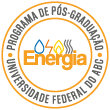Banca de DEFESA: ANDREA CAROLINA GUTIERREZ GOMEZ
Uma banca de DEFESA de DOUTORADO foi cadastrada pelo programa.DISCENTE : ANDREA CAROLINA GUTIERREZ GOMEZ
DATA : 29/09/2021
HORA: 14:00
LOCAL: online (meet.google.com/hpt-cxqs-jbn)
TÍTULO:
USE OF URBAN SOLID WASTE IN DIRECT COMBUSTION: ESTIMATION OF THE THERMOCHEMICAL BEHAVIOR OF ASHES, AVOIDED EMISSIONS AND ENERGY POTENTIAL
PÁGINAS: 173
GRANDE ÁREA: Outra
ÁREA: Fontes Alternativas de Energia
RESUMO:
This research presents the direct combustion with energy recovery as a treatment method to wet municipal solid waste (waste mixed and contaminated with organic fractions) generated from the selective collection in Brazil, based on its thermochemical characterization, searching for a final destination different from dumps, and decreasing the waste amount sent to landfills in the country. The energy recovery potential was calculated from the physical, chemical, and thermal characterization of products found in the waste stream grouped into five combustible categories (Organic matter, Sanitary waste, Paper/cardboard/Tetra Pak®, Plastics, and Textiles). The thermochemical characterization, the waste's behavior as a feedstock for energy power plants, kinetic parameters of the combustible fraction, the energy recovery potential, and GHG emissions avoided from three scenarios of electric power efficiency (18, 25, and 30%) were studied. The results show that the combustion with energy recovery could be used as a treatment method because of the Brazilian MSW characteristics as a solid fuel, such as a lower heating value of 7.22±1.76 MJ.kg-1, moisture content of 49.19±10.05%, and an ash content of 14.23±6.71%; highlighting that in some regions of the country, there is the possibility of using auxiliary fuels for waste combustion. The combustible categories have a high potential for deposit formation, stimulated mainly by the Na2O content. In this way, MSW combustion facilities could contribute an additional 3% of electrical energy to the national energy matrix from the use of at least 67% of the MSW collected. Furthermore, annual emissions of about 1 million tonnes of CH4 (24 million tonnes of CO2-equivalent) and around 140 million cubic meters of dumps could be avoided, dependent of the gross electrical efficiency used in Waste-to-Energy technology.
MEMBROS DA BANCA:
Presidente - Interno ao Programa - 1648855 - ANA MARIA PEREIRA NETO
Membro Titular - Examinador(a) Interno ao Programa - 1548098 - GILBERTO MARTINS
Membro Titular - Examinador(a) Externo à Instituição - WALDIR ANTONIO BIZZO - UNICAMP
Membro Titular - Examinador(a) Externo à Instituição - JOSE ANTONIO PERRELLA BALESTIERI - UNESP
Membro Titular - Examinador(a) Externo à Instituição - SILVIA AZUCENA NEBRA DE PEREZ - UFABC
Membro Suplente - Examinador(a) Interno ao Programa - 1600874 - MARCELO MODESTO DA SILVA
Membro Suplente - Examinador(a) Externo à Instituição - RAFAEL AUGUSTO SOTANA DE SOUZA - UFSCAR




